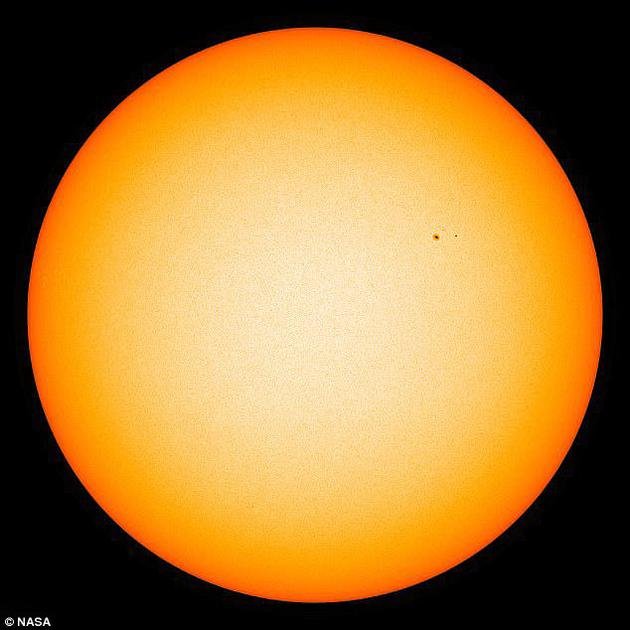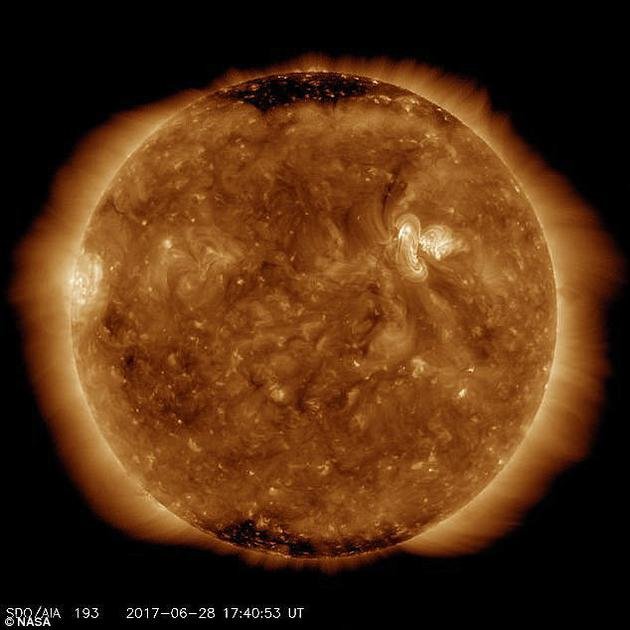Earth will face a "mini ice age" in 2050: the sun is clearly dimming.

Scientists at the university of California, San Diego, say they have been able to pinpoint exactly when the next solar minimum will occur, and that the sun will begin to become "unusually cold" as early as 2050.

In the figure, the sun's surface is active, with sunspots and solar flares. During the solar minimum, the sun's surface becomes visible as the uv rays decrease.
They will be under a cold period known as the "Minimum", this period will be a repeat of the mid 17th century European climate, then the European climate is referred to as "the Maunder Minimum (Maunder Minimum)", the temperature is very low, enough to cause freezes the river Thames in London.In addition, the Baltic sea was frozen in the "maunder minimum", when the Swedish army was able to march on the ice and invade Denmark in 1658. Scientists point out that this period is very similar to the "mini ice age".The physicist Dan Lubin, who led the study, analyzed the maunder minimum, saying that the climate we might be experiencing in the future was even worse than in the mid-17th century. In particular, the sun may be dimmer, lower than the solar minimum.
Scientists predict that there will be a very high probability of a very small period in the near future, because the sunspot model of the recent solar activity cycle is similar to that of the past. When the sun goes through a maximum period, the core force of the sun's nuclear fusion may make more magnetic rings on the surface of the sun due to extreme ultraviolet wavelengths.At the minimum of solar activity, the sun's magnetism will weaken, resulting in less sunspot radiation and ultraviolet radiation reaching the earth's surface. Eventually, the sun's surface will become clearer and gradually dim.
Scientists have been able to predict the time of the next solar minimum, but data collected over the past 20 years have helped researchers determine the brightness of the sun within a very small period of time. Scientists point out that the sun's temperature may be 7% below its 11-year cycle. As a result, the first effect on earth when the sun goes down is that stratospheric ozone becomes thin.The study showed that the thinning of the ozone layer would change the temperature structure of the stratosphere and then change the temperature of the lower atmosphere, especially wind and climate types. Cooling, however, is not uniform.
Scientists once again referred to the maunder minimum, during which temperatures in Europe dropped significantly, but in places such as Alaska and southern Greenland, it became warmer.
Some may wonder whether extreme cooling of the sun could potentially prevent global warming. Scientists say the extreme cooling of the sun is unlikely to stop climate change, but it could slow the warming trend.
New research suggests that the minimal cooling effect is only a small part of the warming effect of atmospheric carbon dioxide concentrations. Scientists estimate that the minimum period may only lead to a 0.25% drop in global temperature between 2020 and 2070.Eventually, the earth's surface temperature drops by only about 0.1 degrees Celsius, which is not enough to stop global warming, but it could at least partially mitigate the global warming trend.
Hi! I am a robot. I just upvoted you! I found similar content that readers might be interested in:
http://www.dailymail.co.uk/sciencetech/article-5373497/Scientists-warn-sun-unusually-cool-2050.html